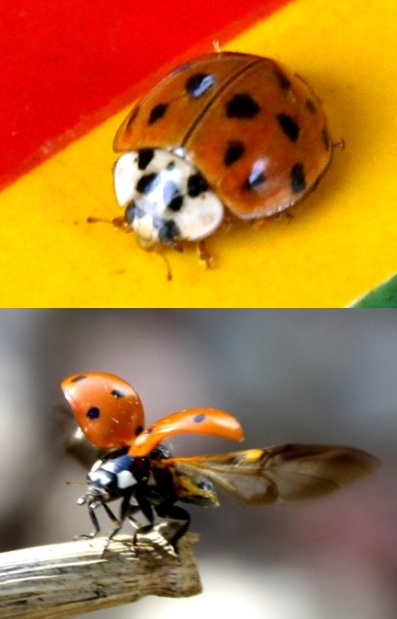
 |
| Home | Who We Are | List of Orders | References | Contact Us |
Insect Identification Key Your answer to the previous question was that your insect has two pairs of wings. Do the two pairs of wings differ greatly in structure, with the first being thick and hard or fibrous? As an example, consider a ladybug (which is actually a type of beetle). A ladybug has two pairs of wings, or four wings total. Two of the wings in a common ladybug are red with black spots. These wings are shiny and hard, and when the insect isn’t flying, they lay flat against its body. To fly, however, the ladybug uses a second pair of wings that unfold from beneath the black-spotted red pair. This second pair of wings is membranous (filmy and flexible). Ladybugs, therefore, have two pairs of wings that differ greatly in structure. Click one of the following: No, my insect's wings are all similar in structure. I would like to return to the start of this key. Unless noted otherwise, photographs on this website are the property of the photographers and may not be reused without written permission from the photographers. To obtain permission, email the photographers here. High-resolution versions of the photographs are available. Photos at the top of this website are (from left to right): potato beetle (Leptinotarsa decemlineata) — photo credit: Scott Bauer, U.S. Department of Agriculture; ebony jewelwing (Calopteryx maculata)— photo credit: U.S. Fish and Wildlife Service; sweat bee (Agapostemon splendens) — photo credit: Natalie Allen and Stephanie Kolski, U.S. Geological Survey; preying mantis, monarch butterfly (Danaus plexippus), hellgrammite (aka toe biter) larva and eyed click beetle (Alaus oculatus) — photo credit: Leslie Mertz, DailyGraceCards.com; Halloween pennant (Celithemis eponina) — photo credit: Kay Meng, U.S. Fish and Wildlife Service. Reproduction of material from any GoExploreMichigan Media webpages without written permission is strictly prohibited.
Identify Insects in Michigan ... and beyond!

Home Who We Are
List of Orders
References
Contact Us